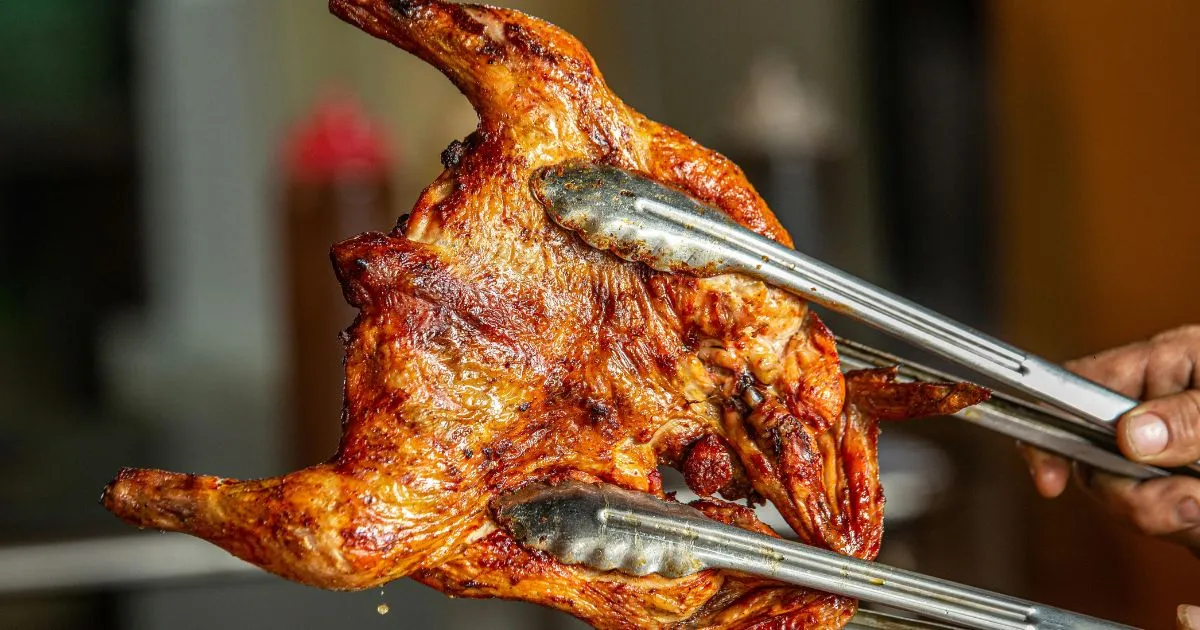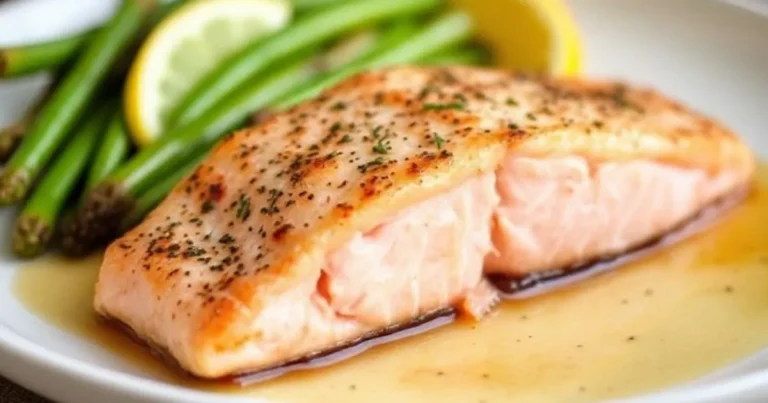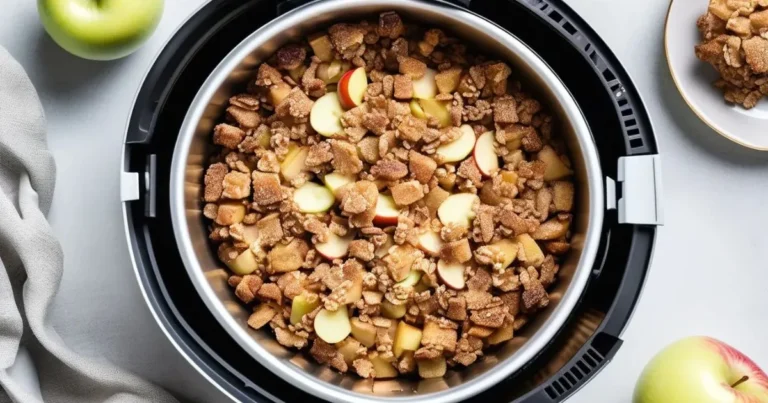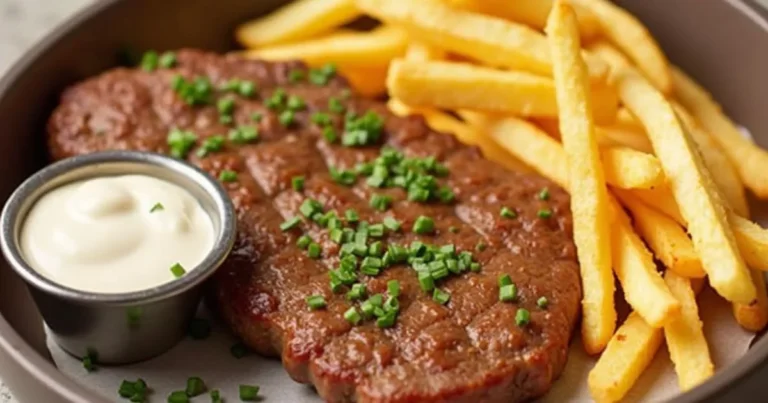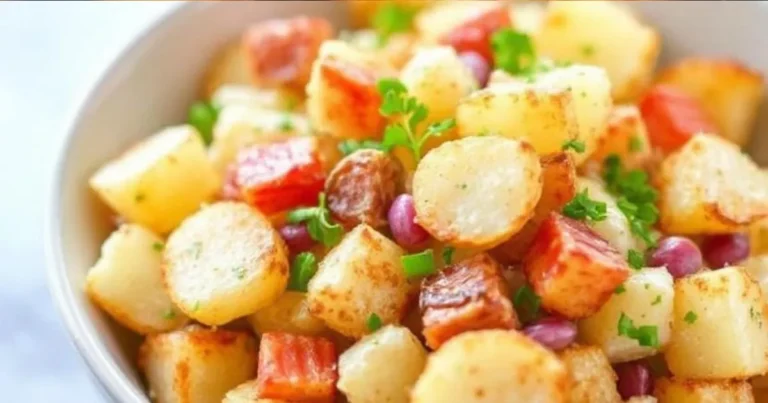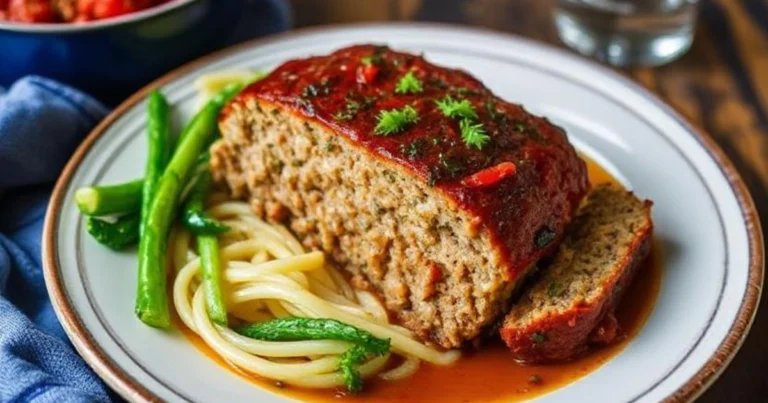Brine Chicken Recipe
A Brine Chicken Recipe is a simple yet effective way to ensure your chicken is tender, juicy, and packed with flavor. Brining involves soaking the chicken in a mixture of water, salt, and seasonings, which helps the meat retain moisture while cooking, preventing it from drying out. The process also allows the chicken to absorb the flavors of the seasonings, making each bite more flavorful. Common brine ingredients include salt, sugar, garlic, herbs like thyme or rosemary,
Table of Contents
Exploring the world of cooking, a chicken brine recipe turns simple chicken into a feast for the senses. This method has changed home cooking, making chicken juicy and full of flavor. It wows everyone at the dinner table.
Learning the brine chicken recipe is like gaining a secret advantage in the kitchen. It involves soaking chicken in a saltwater mix. This mix goes deep into the meat, making it taste and feel better than usual cooking.
Both pro chefs and home cooks love chicken brine. It’s a game-changer in cooking. By mastering brining, you can make your chicken dishes always delicious.
Understanding the Science Behind Chicken Brining
Learning how to brine chicken breast opens up a world of culinary science. It turns simple chicken into a juicy, flavorful dish. Chicken brine is not just salt and water; it’s a magic trick that changes meat at its core.
The science of brining involves salt, water, and protein molecules working together. Knowing this can improve your cooking and make delicious chicken every time.
How Salt Penetrates the Meat
Salt molecules penetrate chicken meat in a cool way. When you brine chicken, salt breaks down proteins. This creates channels for moisture and flavor to get deep into the meat.
- Salt weakens protein bonds
- Creates microscopic pathways for flavor
- Helps retain internal moisture
The Role of Osmosis in Brining
Osmosis is key when brining chicken breast. It lets water and salt move through cell membranes. This keeps chicken moist during cooking.
| Osmosis Effect | Result in Chicken |
|---|---|
| Water Movement | Increased Moisture Retention |
| Salt Penetration | Enhanced Flavor Distribution |
Chemical Changes During Brining
Brining triggers amazing chemical changes. Proteins denature and unwind, trapping water molecules. This chemistry makes chicken tender, juicy, and full of flavor.
“Brining is culinary science at its most delicious” – Professional Chef
Understanding these scientific principles lets you brine chicken perfectly every time.
Essential Ingredients for a Basic Brine Chicken Recipe
Creating the perfect brine chicken recipe starts with understanding the key ingredients. These ingredients transform ordinary poultry into a mouthwatering dish. Your smoked chicken brine needs careful selection of components to enhance flavor and moisture.
At the core of any successful brine are four fundamental ingredients:
- Water: The primary liquid base for your brine
- Salt: Critical for meat penetration and flavor
- Sugar: Balances saltiness and promotes browning
- Aromatics: Herbs and spices for additional flavor
Kosher salt is the preferred choice for brining chicken. Its larger crystals dissolve easily and distribute evenly. Granulated table salt can make the taste too salty.
| Ingredient | Quantity (per gallon of water) | Purpose |
|---|---|---|
| Kosher Salt | 1 cup | Seasoning and moisture retention |
| Brown Sugar | 1/2 cup | Flavor balance and caramelization |
| Peppercorns | 2 tablespoons | Aromatic enhancement |
| Fresh Herbs | 3-4 sprigs | Additional flavor complexity |
“The secret to a great brine is balance – salt, sweetness, and aromatics working together to create culinary magic.” – Professional Chef
For a smoked chicken brine, add wood chip-inspired spices. Smoked paprika or bay leaves enhance the smoky profile before cooking.
Step-by-Step Guide to Preparing Your Chicken Brine
Learning how to brine chicken breast is all about being precise and careful. This process turns regular chicken into a juicy, tasty dish that will wow your guests.
Getting the fried chicken brine right is key. Here’s how to make sure your chicken is tender and full of flavor.
Measuring Ingredients with Precision
Starting with the right measurements is essential for a great brine. Here’s a simple guide:
- Use kosher salt or sea salt for best results
- Measure 1/4 cup of salt per quart of water
- Add optional sugar for balanced flavor
Temperature Control Techniques
Temperature is crucial for brining. Follow these important tips:
- Cool brine solution completely before adding chicken
- Maintain refrigeration during the entire brining process
- Keep temperature between 34-40°F
Selecting the Right Container
The right container is vital for brining. Here are some good options:
| Container Type | Pros | Cons |
|---|---|---|
| Food-Grade Plastic | Lightweight, affordable | May absorb odors |
| Glass Dish | Non-reactive, easy to clean | Heavy, can break |
| Stainless Steel | Durable, non-reactive | More expensive |
Pro tip: Make sure your container is big enough to fully submerge the chicken without overcrowding.
“The key to perfect brining is patience and precision.” – Professional Chef
Time and Temperature: Perfect Brining Guidelines
Mastering the art of brining chicken takes precision in timing and temperature. Your success depends on controlled conditions that make the chicken juicy and flavorful.
When preparing your chicken brine, consider these critical guidelines:
- Whole chickens: 8-12 hours of brining time
- Chicken breasts: 2-4 hours maximum
- Chicken thighs: 4-6 hours recommended
Temperature control is key in brining. Always brine chicken in the refrigerator, keeping it between 34-40°F. This stops bacteria from growing and lets salt soak into the meat.
“The key to perfect brining is patience and precision.” – Professional Chef
Watch for these warning signs of over-brining:
- Extremely salty taste
- Mushy meat texture
- Overly soft protein structure
Smaller cuts need less time, while bigger pieces need more. Always rinse your chicken after brining to remove excess salt. Then, pat it dry before cooking.
Remember, a successful brine chicken recipe balances time, temperature, and technique. This way, you can get restaurant-quality results in your own kitchen.
Flavor Variations for Your Brined Chicken
Turning your chicken into something special starts with creative brining. Whether you’re making a smoked chicken brine or a crispy fried chicken brine, the right flavors can make it taste like a restaurant dish.
Herb and Spice Combinations
Making the perfect brine is all about mixing flavors right. Here are some great herb blends:
- Mediterranean-inspired: Rosemary, thyme, and oregano
- Asian-influenced: Ginger, star anise, and green onions
- Cajun-style: Cayenne, paprika, and dried herbs
Sweet and Savory Options
Try new flavors in your smoked chicken brine with sweet additions:
- Honey and bourbon glaze
- Maple syrup and black pepper
- Brown sugar and mustard seeds
Regional Flavor Profiles
Discover global tastes with these fried chicken brine ideas:
- Korean: Gochugaru, garlic, and soy sauce
- Mexican: Chipotle, lime, and cilantro
- Indian: Turmeric, cumin, and yogurt-based brine
Remember, the secret to a great brine is being creative and finding the right balance. Don’t hesitate to try new things and create your own special flavor!
Common Mistakes to Avoid When Brining Chicken
Learning how to brine chicken breast needs focus and knowing what to avoid. The brining process might look easy, but mistakes can ruin your dish.
- Avoid over-brining, which can make chicken excessively salty
- Use precise salt measurements to prevent flavor imbalance
- Ensure complete salt and sugar dissolution before adding chicken
- Maintain consistent refrigeration during brining
The right amount of salt is key for brining. Too much salt can make chicken tough and unpalatable. Too little salt means the chicken won’t stay moist.
“Precision is key in chicken brine preparation – measure carefully and observe your ingredients” – Professional Chef Recommendation
Another big risk is cross-contamination. Always use clean tools, wash your hands well, and keep raw chicken away from other foods.
| Brining Mistake | Potential Consequence | Prevention Strategy |
|---|---|---|
| Over-salting | Extremely salty meat | Use precise salt-to-water ratio |
| Warm brine temperature | Bacterial growth | Keep brine refrigerated |
| Extended brining time | Mushy chicken texture | Follow recommended brining duration |
By knowing and avoiding these common mistakes, you’ll improve your chicken brining skills. You’ll make delicious, juicy chicken every time.
Cooking Methods for Brined Chicken
Once you’ve made your smoked chicken brine or fried chicken brine, picking the right cooking method is key. It’s what makes your brined chicken a true masterpiece. Each method can change the taste and texture in amazing ways.
Smoking Your Brined Chicken
Smoking brined chicken needs careful attention and time. The brine keeps the meat moist and ready for a deep flavor. Pick wood chips that match the chicken’s taste:
- Apple wood for a subtle sweetness
- Hickory for intense smoky notes
- Pecan for a mild, nutty essence
Deep Frying Techniques
Fried chicken fans know a great brine makes the inside juicy and the outside crispy. Keep the oil at 325-350°F for the best results.
| Chicken Cut | Approximate Frying Time |
|---|---|
| Whole Chicken | 12-15 minutes |
| Chicken Breasts | 8-10 minutes |
| Chicken Thighs | 10-12 minutes |
Oven Roasting Methods
Oven roasting is a flexible way to cook brined chicken. Heat your oven to 425°F. Use a meat thermometer to check the chicken’s internal temperature, aiming for 165°F.
“The key to perfect brined chicken is maintaining moisture while achieving a golden, crispy skin.” – Professional Chef
Each cooking method has its own benefits. Whether you like the smoky flavor of smoking, the crispy outside of frying, or the even heat of roasting, your brined chicken will be amazing.
Conclusion
Exploring brine chicken recipes has given you amazing cooking skills. You now know how to make chicken taste amazing and stay moist. This knowledge will make your cooking better, like a pro’s.
Trying out different brine recipes lets you discover new tastes. You can go from simple herbs to bold flavors. This skill will make your chicken dishes a hit with everyone.
Getting good at brine chicken takes practice and patience. Start with easy recipes and then try harder ones. Each time, you’ll learn something new about cooking chicken.
Brining is more than just a recipe. It’s a key skill for any cook who wants to improve. Your hard work will make your meals always delicious and impressive.
FAQ
What is chicken brining and why should I do it?
Chicken brining is a method of soaking chicken in saltwater. It makes the meat juicy and flavorful. This technique helps the chicken stay moist and tender, preventing it from drying out.
How long should I brine chicken?
Brining time varies by chicken cut. Breasts need 30 minutes to 2 hours. A whole chicken can brine for 4-8 hours. Always keep it cold.
What type of salt should I use for brining?
Use kosher salt for brining. It dissolves well and seasons evenly. Table salt is too intense. Sea salt works if it’s fine and dissolves completely.
Can I add other ingredients to my chicken brine?
Yes! Add herbs, spices, citrus, garlic, sugar, or beer and wine. These enhance flavor. Just don’t overpower the chicken’s taste and make sure dry ingredients dissolve.
Is brining safe? How do I prevent bacterial growth?
Brining is safe if done right. Brine chicken in the fridge to stay under 40°F. Use clean containers and wash hands and surfaces well. Never leave chicken at room temperature and discard the brine after use. Rinse the chicken before cooking if worried about salt.
Will brining work for different cooking methods?
Yes! Brined chicken is great for smoking, roasting, grilling, or frying. It stays moist and flavorful with any method.
Can I brine frozen chicken?
Thaw chicken first. Frozen chicken can absorb salt unevenly and be unsafe. Thawing ensures even seasoning and safety.
How do I know if I’ve over-brined my chicken?
Over-brining shows as very salty meat, mushy texture, and bad taste. If it’s too soft or salty, it’s over-brined. Follow recommended times and use the right salt ratio.

